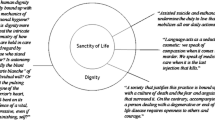Abstract
In a much cited phrase in the famous English ‘Child B’ case, Mr Justice Laws intimated that in life and death cases of scarce resources it is not sufficient for health care decision-makers to ‘toll the bell of tight resources’: they must also explain the system of priorities they are using. Although overturned in the Court of Appeal, the important question remains of the extent to which health-care decision-makers have a duty to give reasons for their decisions. In this paper, I examine the philosophical foundations of the legal obligation to give reasons in English law. Why are judges sometimes supportive of the imposition of a duty to give reasons and sometimes not? What is it about the context of life and death health care allocation problems that makes it unsuitable in their view for such a duty; and is this stance justified? What is it to give a reason for a decision? I examine Frederick Schauer’s account of reason-giving in terms of generalisation and commitment and I suggest that it provides an overstated account of what giving a reason commits one to. I go on to examine an idea of judicial creation: that where value judgements are “inexpressible” there is a strong reason not to impose a duty to give reasons on to public bodies. The strongest case for a duty to give reasons is in terms of the value of respect for citizens. I argue that there is nothing in the very nature of reason-giving that ought to preclude the imposition of such a duty in this context, but concede that there is a serious danger of legalism that could result in a hamstringing of health care decision-making. It is up to judges and lawyers to seek to avoid this danger.
Similar content being viewed by others
Notes
R v. Cambridge DHA ex p. B [1995] 2 ALL ER 129.
See H W Wade and C Forsyth, Administrative Law, (8th edition), Oxford, 2000, p. 51.
The literature is enormous. The seminal paper for contemporary debate is HLA Hart, `Legal Rights’ reprinted in his Essays on Bentham, Oxford 1982, pp. 162–193.
Ex p B 137 h-j (above n.1).
The issue was not discussed explicitly as an issue about the imposition of a reasons requirement, but explaining a system of priorities clearly involves giving reasons for the choices that have been made.
T.M. Scanlon, What we Owe to Each Other, Harvard, 1988, p. 17.
F Schauer, `Giving Reasons,’ 47 Stanford Law Review (1995), pp. 635–59.
Schauer p. 635.
Schauer p. 642.
Schauer p. 649.
Schauer p. 649.
Wade and Forsyth, (above n.2).
P Neill `The Duty to give Reasons: the Openness of Decision-Making’ in C Forsyth and I Hare (eds) The Golden Metwand and the Crooked Cord, pp. 161–184.
See especially: A Le Sueur, `Taking the Soft Option?: The Duty to Give Reasons in the Draft Freedom of Information Bill’, Public Law, 1999, pp. 419--427 and ’Legal Duties to Give Reasons’ (1999) 52 Current Legal Problems, especially p. 153 et seq.
R v Ministry of Defence, ex p. Murray 1997, (1998) C.O.D. 134.
Ibid.
The seventh proposition of Wittgenstein’s, Tractatus, London: Routledge, 1961.
Cf. G Ryle, The Concept of Mind, Penguin, 1949. pp. 9–10.
G Calabresi and P Bobbit, Tragic Choices. New York: Norton, 1978. See also D Orentlicher, Matters of Life and Death: Making Moral Theory Work in Medical Ethics and the Law, Princeton, 2001, pp. 123–167.
Calabresi and Bobbit, Ibid.
H J Aaron and W.B Schwartz, The Painful Prescription: Rationing Hospital Care, Washington, Brookings, 1984.
ibid.
For a recent treatment see Tony Hope, Medical Ethics: A Short Introduction, Oxford 2004, pp. 26–41.
Calabresi and Bobbit, Tragic Choices, p. 26.
Cf. Jonathan Glover, commenting on a similar argument by Calabresi writing as a sole author, states it to be `a response to image and publicity, rather than reality.’ Causing Death and Saving Lives, p. 211.
Williams, Ethics and the Limits of Philosophy, pp. 108–109.
See generally, Joseph Raz, The Morality of Freedom, Oxford, 1986.
Raz, ibid. p. 325.
The phrase is taken from N. Daniels and J. Sabin, `Limits to Health Care: Fair Procedures, Democratic Deliberation, and the Democracy Problem for Insurers.’ 26 Philosophy and Public Affairs, (1997) pp. 303–350 at p. 307.
Christopher Newdick, Who Should we Treat?: Law, Patients and Resources in the N.H.S, Oxford, 1995, pp. 125–128.
Ibid. pp. 127–128.
Above n.15.
Author information
Authors and Affiliations
Corresponding author
Additional information
I am grateful for the stimulation I received from audiences at the Universities of Keele and Oxford. Many thanks are also due to Angus Dawson, Grant Lamond and Nick Barber for very helpful comments.
Rights and permissions
About this article
Cite this article
Stanton-Ife, J. Resource Allocation and the Duty to Give Reasons. Health Care Anal 14, 145–156 (2006). https://doi.org/10.1007/s10728-006-0024-6
Published:
Issue Date:
DOI: https://doi.org/10.1007/s10728-006-0024-6



